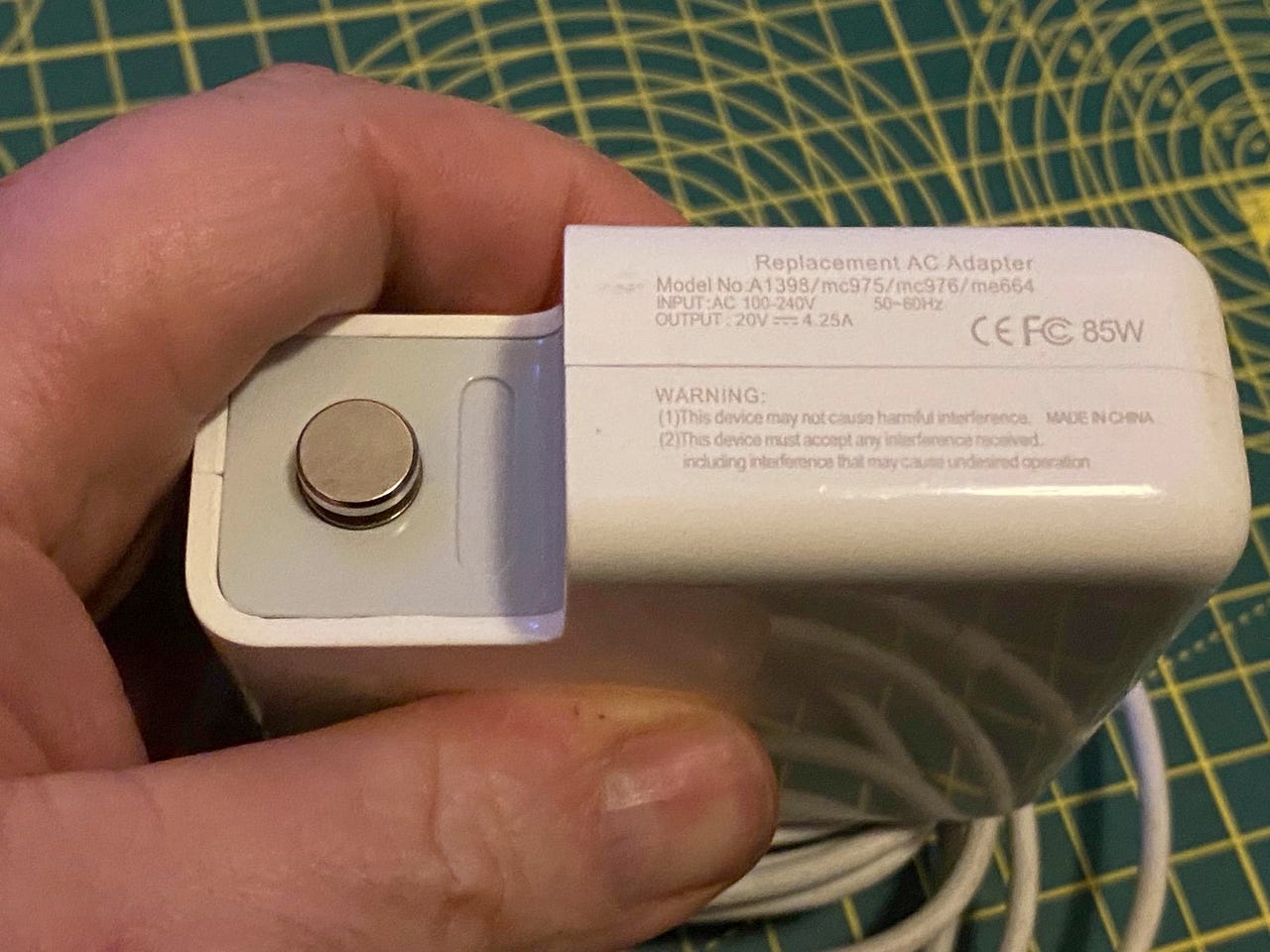Test your diagnostic skills: What's the problem with this MacBook charger?

MacBook chargers are pretty good, but by the time they die, it feels like false economy to pay the big bucks that Apple wants, especially for the older MagSafe chargers.
So, you end up buying something in the $20 to $30 bucks region. Not brilliant, but not too shabby.
Or at least that's what you think.
This third-party MacBook Pro MagSafe Pro charger ran fine for a couple of years, and then, according to the user, it suddenly died. As you can see from this photo, the charger is definitely not genuine.

The charger
Can you see the problem? Again, this time a visual inspection would have given it away, and the problem is visible in this shot:
Can you spot the problem?
Check this out: Extreme weather forecast? Essential gear for when the power goes out
How to test chargers and power banks to make sure they don't blow up your expensive smartphone
I suspected a failure with the charger's electronics. I tested the fuse and it was OK.
Note: Here, in the UK, plugs are fused, mostly to protect the appliance's cable. I often sen third-party devices that either have a fake fuse or the fuse is not connected.
Testing the fuse
I then probed the output of the charger at the MagSafe connector, and that's when I spotted that the charger was still working, and I saw the problem.
One of the connector pins on the MagSafe connector had burnt out. It's visible in the photo above, but here's a close-up:
The problem - a burnt connector pin
I've never seen this before, and I'm not sure if it was a problem with the connector itself or a seating issue on the MacBook Pro. But, clearly, it was making a bad connection, and pitting happened until it stopped making a connection.
I partially dismantled the connector to try to tell if it was a genuine Apple product or not (usually they are), but they're hard to pull apart in a non-destructive way, and the results were inconclusive.
Did you spot the problem? Have you seen anything like this?